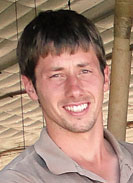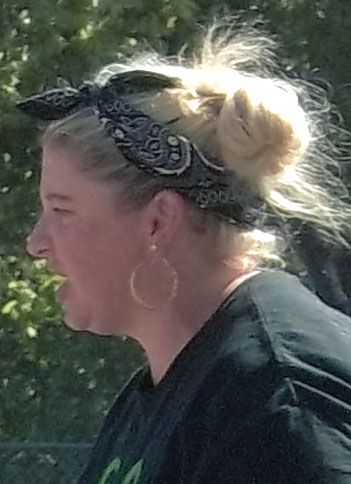 When James Mast left Ohio for warmer weather and a smaller community at 19, he had no idea he would end up being a turkey farmer in Huntsville, Ark.
When James Mast left Ohio for warmer weather and a smaller community at 19, he had no idea he would end up being a turkey farmer in Huntsville, Ark.
He and his wife Glenda met while volunteering at the Mennonite operated Hillcrest Nursing Home in Harrison, Ark., owned by Boone County. Volunteers are provided housing and a small part of the county wage, with the rest going to missions. On their first date, the new couple visited friends who were volunteering at the nursing home and continued to Branson, Mo., for dinner. Eventually, they married and bought 40 acres from Glenda’s father, Pete Hochsteler.
The purchase included three turkey houses built in 2002, where James had worked for Pete for four years. The couple has three children: sons Braden, 4, and Chandler, 2, in addition to daughter Marissa only 4 months old.
For the last couple of years, Butterball has been transitioning from the traditional rotational style of raising turkeys to one in which the entire flock arrives and leaves at the same time with a three-week resting period for thorough cleanout. This is done to put one more protective layer between the birds and disease. James began using this system last year.
James receives 29,600 to 33,000, 1- to 2-day-old chicks, with the flock size depending upon the finishing weight Butterball selects. When the chicks arrive from North Carolina, two-thirds are put into the middle house, which will initially serve as a brooding house, with the other third being placed in half of one of the remaining houses. Typically, 800 chicks are placed into 42 cardboard rings secured in the rice hull bedding and next to two propane-powered stoves to keep them warm. The rings provide a feeling of security and make it easier for the chicks to find food and water. They are hand fed with a poultry bucket for the first four days. On the fourth day, the cardboard is removed and burned for additional disease control with the buckets and waters remaining in place until the young birds find and learn to use the new sources of feed.
Feed composition changes from crumbles to pellets as the birds mature. After six weeks, half of the chicks in the brooding house are moved to the empty one while the chicks in the partially used house are given access to the entire house thereby allowing the young turkeys sufficient room to grow to their pre-determined shipping weight.
Once the houses are empty, they are carefully cleaned. Cleaning includes removing litter and replacing the rice hulls, as well as spraying disinfectant from a sprayer tank behind a tractor. The tank has different sets of nozzles for the sides and ceiling. Stoves are disinfected with a power washer. Water lines are also flushed before a new flock arrives in addition to being flushed once a week while the birds are there.
An additional disease prevention mandate is having a different pair of boots for each house as well as a disinfectant pan to clean the boots before entering. This is especially important for the Butterball serviceman who comes once a week to check on the birds’ progress and update mortality sheets.
He is also on call whenever James wants to examine a possible issue.
“Each house has a water meter, and dropping consumption is often the first clue that something is going on,” James explained.
The turkey litter is put to good use by being spread on Pete’s farm, as well as on neighbors’ land according to government regulations and individual-approved plans.
Pete currently maintains an Angus herd, which James may buy in another year as part of Pete’s life simplification process.
“Adding cattle will bring additional income as well as new experiences for our children,” James said.
“The best part of being a farmer’s wife is having him here so the children can be involved in everything we do,” Glenda added. “That more than makes up for the odd and often long hours which are especially difficult during haying season.”
James bought a bulldog puppy when he moved from Ohio. A fellow church member, Jonathan Miller, asked if he wanted to raise puppies and got him started. James has 10 females and two males with five to seven puppies per litter. Some females have two litters per year while others only have one litter in a year and a half. James breeds pet-quality rather than show quality dogs and generally sells through a broker.
“My boys play with the puppies more than help, but Braden is getting old enough to actually help feed them,” James said.







